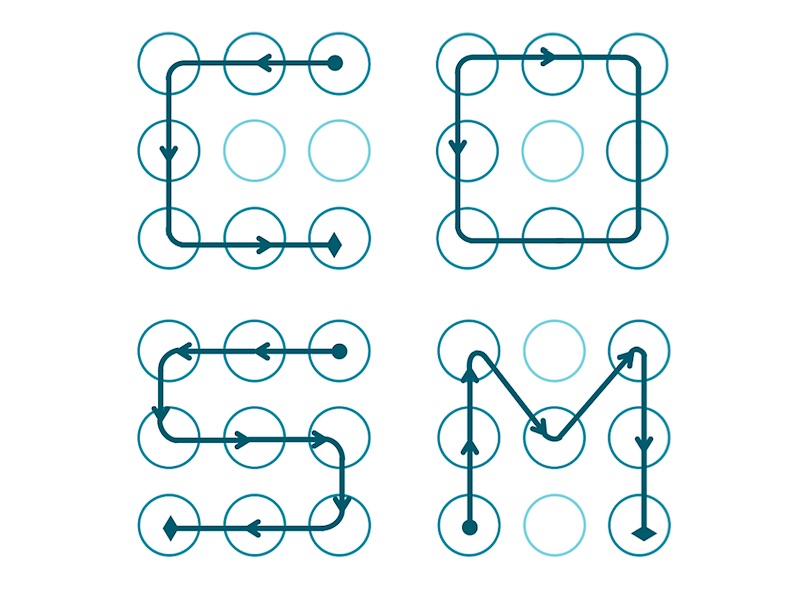- Home
- Mobiles
- Mobiles News
- Android Lock Patterns Aren't as Secure as You'd Like Them to Be: Study
Android Lock Patterns Aren't as Secure as You'd Like Them to Be: Study

If you thought pattern locks are good measures to secure your Android device, you're up for some sad news. New research shows that pattern locks are surprisingly very predictable to guess.
Android Lock Pattern (ALP) isn't weak in itself, but the way we use it makes our lock pattern easy to predict. ALPs contain a minimum of four nodes and a maximum of nine. This, in theory, gives a user nearly 400,000 different combinations to choose from. But most users are using similar patterns.
In a test of 4,000 different ALP samples, Martle Løge of the Norwegian University of Science and Technology found that 44 percent of these patterns started in the top left-most node of the screen, while a startling 77 percent started in one of the four corners. 10 percent of users, moreover, like to use a single letter word like N, or O, as their pass code.
The test further revealed that a large percentage of users moved from left to right and top to bottom. Furthermore, many users only use four nodes, resulting in far fewer combinations. Many users also seemingly don't tend to change direction in their pattern, a practice which if used could make their pattern significantly stronger.
So what should you be doing to make your pattern lock more secure? Løge noted that one should turn off the "make pattern visible" option by going to the device's settings. Also consider changing your pattern to add crossovers; use more than four nodes; and don't start from the corner.
Get your daily dose of tech news, reviews, and insights, in under 80 characters on Gadgets 360 Turbo. Connect with fellow tech lovers on our Forum. Follow us on X, Facebook, WhatsApp, Threads and Google News for instant updates. Catch all the action on our YouTube channel.
Related Stories
- Samsung Galaxy Unpacked 2025
- ChatGPT
- Redmi Note 14 Pro+
- iPhone 16
- Apple Vision Pro
- Oneplus 12
- OnePlus Nord CE 3 Lite 5G
- iPhone 13
- Xiaomi 14 Pro
- Oppo Find N3
- Tecno Spark Go (2023)
- Realme V30
- Best Phones Under 25000
- Samsung Galaxy S24 Series
- Cryptocurrency
- iQoo 12
- Samsung Galaxy S24 Ultra
- Giottus
- Samsung Galaxy Z Flip 5
- Apple 'Scary Fast'
- Housefull 5
- GoPro Hero 12 Black Review
- Invincible Season 2
- JioGlass
- HD Ready TV
- Laptop Under 50000
- Smartwatch Under 10000
- Latest Mobile Phones
- Compare Phones
- Realme P4x 5G
- OnePlus Ace 6T
- OPPO A6x 5G
- Samsung Galaxy Z TriFold
- Poco F8 Ultra
- Poco F8 Pro
- Huawei Mate 80 RS Master Edition
- Huawei Mate 80 Pro Max
- Asus ProArt P16
- MacBook Pro 14-inch (M5, 2025)
- Poco Pad M1
- Poco Pad X1
- Just Corseca Skywatch Pro
- Honor Watch X5
- Acerpure Nitro Z Series 100-inch QLED TV
- Samsung 43 Inch LED Ultra HD (4K) Smart TV (UA43UE81AFULXL)
- Asus ROG Ally
- Nintendo Switch Lite
- Haier 1.6 Ton 5 Star Inverter Split AC (HSU19G-MZAID5BN-INV)
- Haier 1.6 Ton 5 Star Inverter Split AC (HSU19G-MZAIM5BN-INV)

















